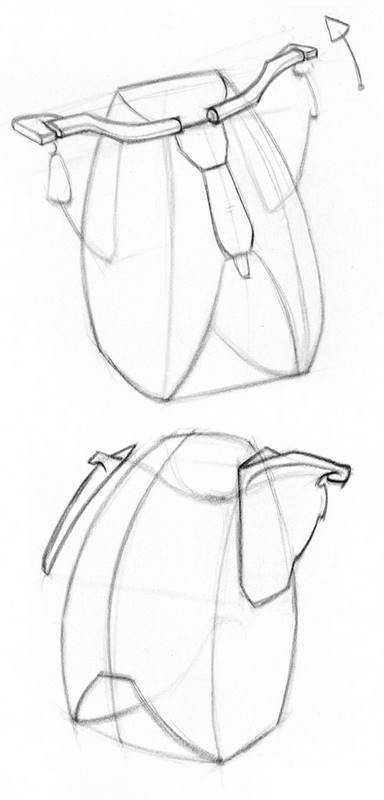We’ve already studied the spine, pelvis and rib-cage. This lesson on the shoulder girdle, will complete the bones of the torso. Very soon we’ll move on to muscles!
Simple Structure of the Clavicle
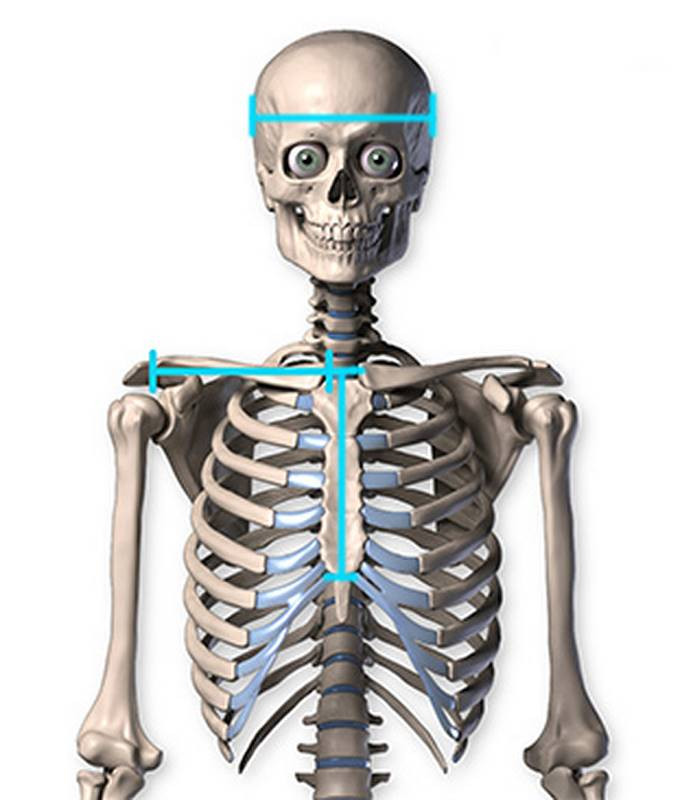
Let’s begin with the clavicle, because that’s where the shoulder begins. A clavicle in its least foreshortened position, is about one cranial unit… more or less, which is about the same length of the sternum… more or less.
That’s the advantage of having them near each other on the front. They’re convenient to compare.
But unless we’re looking at the chest from the front, one of these is likely to be foreshortened. So we need to think of clavicles as fore-shortenable sticks.

But a clavicle is not a straight stick. It has three parts that are offset. In fact, when you put them together, they make the shape of a Cupid’s bow.
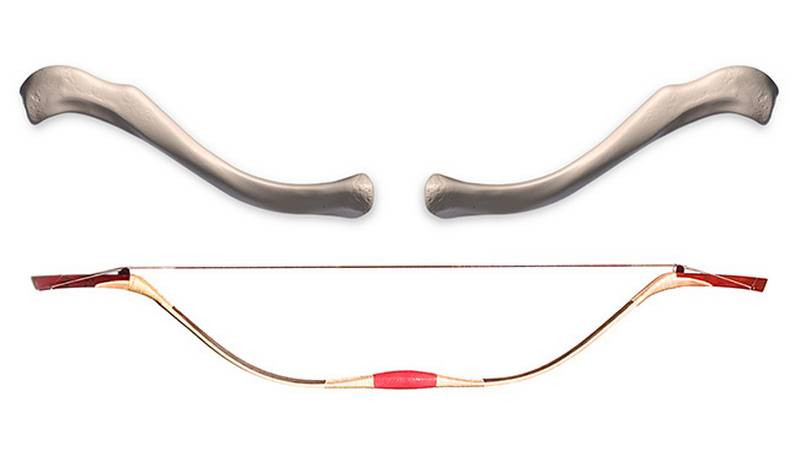
If love is not your thing, the clavicles also look like a pair of bicycle handlebars.
And since they wrap around the base of the neck like the collar of a shirt, we call them collarbones. That’s the first bone of the shoulder girdle: the clavicle.

Simple Structure of the Scapula
Now let’s move to the dominant bone of the shoulder girdle: the scapula. The scapula is also known as the shoulder blade. We can simplify it as a triangle that’s about a cranial unit high, and about a cranial unit wide, and when the scapulae are in the neutral anatomical position, they are about a cranial unit apart… more or less.
Here’s a comparison that may help. The scapula is about the size of a cupped hand, which conveniently matches its concavity to the convexity of the rib cage.
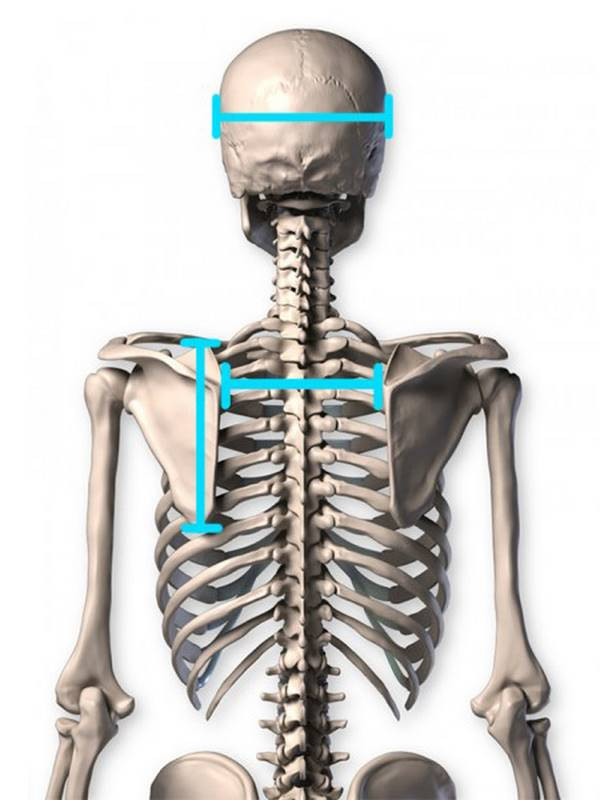

The scapula is all one bone, but for artists, it has two distinct sections. The body of the blade is here, mostly deep below the surface, except this medial ridge. The spine of the scapula is almost a bone of its own. It sticks out like a trowel handle that you can tap along the surface. That’s the spine of the scapula… Sub-cutaneous and super-important.

Now, when we combine the scapula and clavicle, they sit on the rib cage like shoulder pads. The rib cage is thinnest at the top end, but with the shoulders, the thorax is widest at the top.
The shoulder girdle is usually bigger in men than women, though it might not give any advantage in a fight…
Anatomical Details of the Clavicle
Where do you think the arm begins?
The arm begins at the pit of the neck! This is the only bone-to-bone connection of arm to the trunk. The rest of the shoulder girdle never touches the rib cage – a network of muscles lies between them and secures them together.
The pit of the neck is simple, but it has some pit-falls.
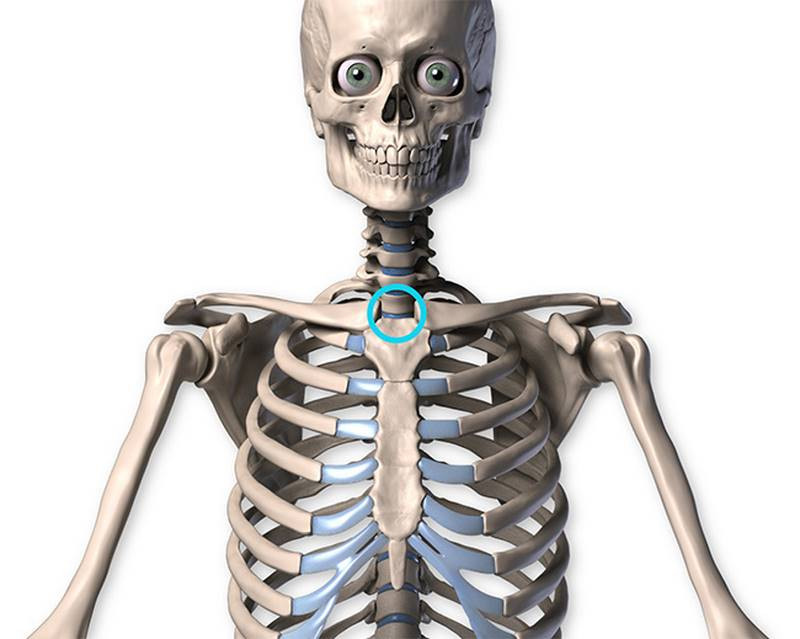
You may know that the sternomastoid tendons make a V shape in there, but only when they’re tensed, and they’re not always tensed. Watch for a box-shaped pocket…

Don’t place them too close together. Clavicles don’t touch each other. They attach at the corners of the manubrium, spread out a good two-fingers-distance from the center. An eyeball could fit in there.
Ligaments strap the clavicles to the sternum. They allow it to rotate on its ellipsoid joint, and smooth out the bumpiness. So this area is usually smooth.
Clavicles are subcutaneous all the way across. They anchor muscles from the neck and chest, and serve as very important landmark lines.
Anatomical Details of the Scapula
When we get to the end of the clavicle, we reach the acromion process. It seems like an extension of the clavicle, but it’s actually an extension of the scapula – the furthest reach of the spine of the scapula. The acromion process is a flat rectangular platform that “steps down” from the clavicle.
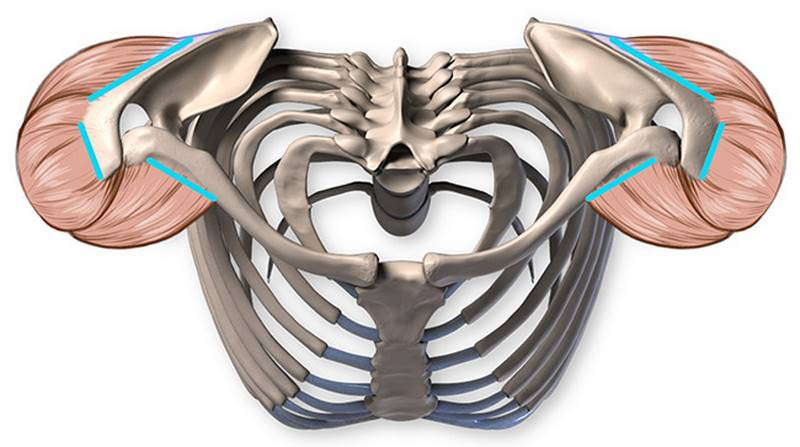
Let’s look at the Spine of the Scapula in more detail.
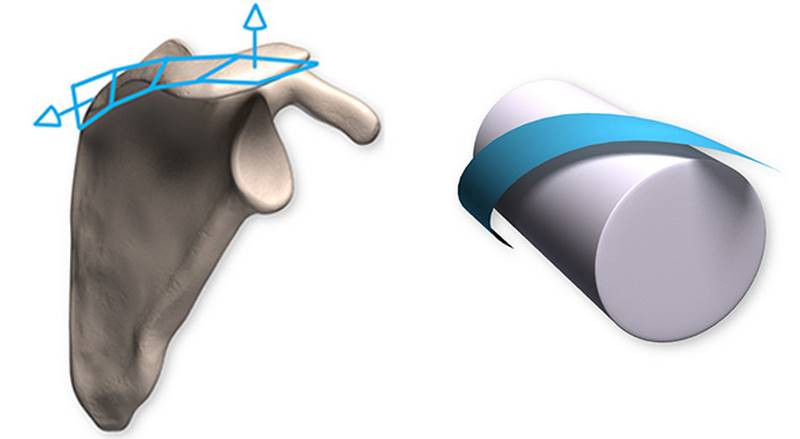
The spine on a human scapula twists from back to top. This means the spine of the scapula is a complex plane, like a ribbon on a cylinder.
This may be hard to draw, but it’s valuable. That rolling plane affects the surface, and helps an artist know how the light changes as it twists.
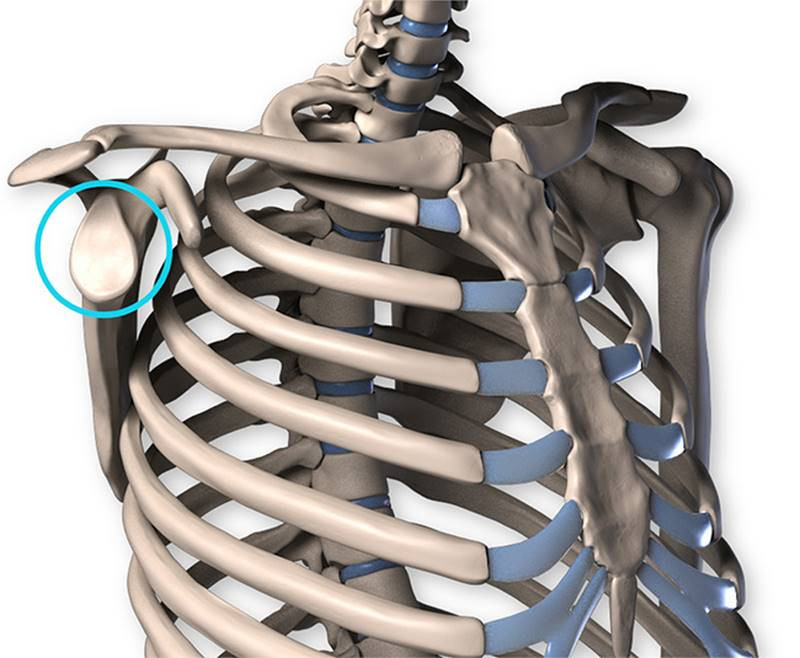
The glenoid cavity is the socket that holds the humerus. It has a shallow socket, not good for supporting weight, but great for mobility. The head of the humerus is a ball that fits into that socket, just below the acromion process. And since the socket is shallow, we have a network of ligaments called the rotator cuff that secure the ball of the humerus to the glenoid cavity.
Now, here’s the super important thing about the scapula. The blade, specifically the medial border, and the spine are the primary landmark lines. They make a fixed angle, more than 90°, and when the scapula moves, that angle stays fixed…

So, how the heck do we find these lines on a model? Where’s the scapula in this crazy mess of bumps? A lot of the scapula is covered with a mesh of muscles, but these lines will always be visible. In some poses, especially on muscular or heavy people we’ll see them as indentations. The trapezius attaches along the spine of the scapula. Rhomboids attach along the side. A group of scapular muscles sit on the inside of the blade. And the deltoid attaches along the bottom of the spine.
In other poses and especially on very lean people, the bones project outward, since the volume of the muscles is thin or stretched.

Motion
To learn about the impressive motions of the scapula, head on over to proko.com/anatomy. In the premium anatomy course, each lesson has extended videos, more drawing examples, and 3d models that you can rotate and draw from any angle. Really check it out!
Assignment
First, draw the ribcage. Then, draw the shoulder girdle on top of the ribcage. Draw around to the other side, ghosting it as it goes around. Look for angles and landmarks, and draw them as three-dimensional forms. We’ll need to master this before we include muscles. Think about it – the positions of the bones determine the shape of the muscles. When we can draw the clavicle and scapula as forms, we have the underlying structure that shapes the shoulders. Make sure to use the assignment images in the downloads tab.












